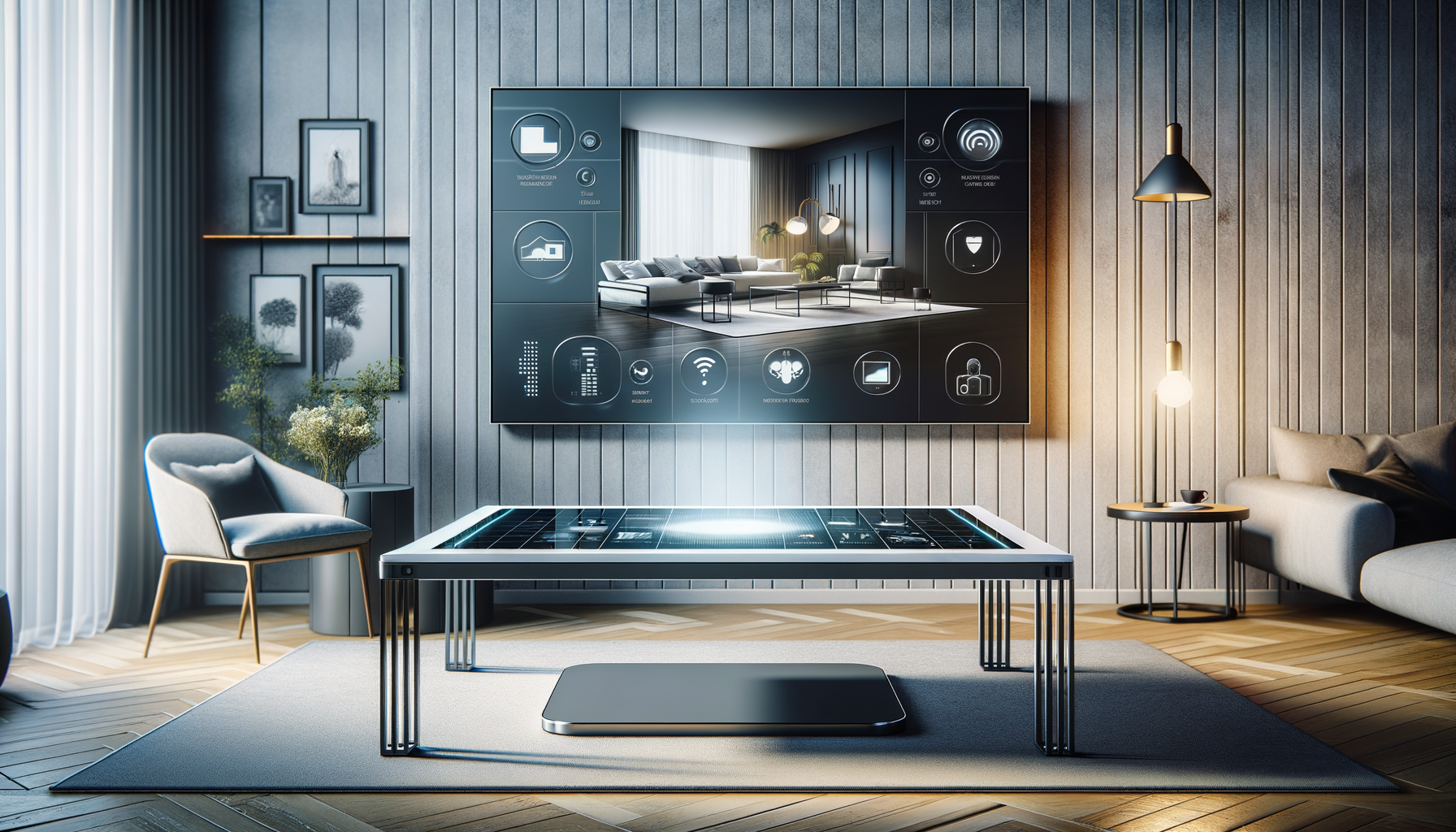The Evolution of Smart Tables
In recent years, the concept of furniture has transcended traditional boundaries, evolving into multifunctional pieces that cater to modern needs. Smart tables, in particular, have become a focal point in this evolution. These tables are not just about aesthetics; they integrate technology to enhance functionality and user experience. From wireless charging capabilities to built-in speakers, smart tables are designed to meet the demands of a tech-savvy generation. This transformation is driven by the increasing need for connectivity and efficiency in both home and work environments.
The initial wave of smart tables focused on incorporating basic tech features. However, as technology advanced, so did the capabilities of these tables. Today, they offer a range of features that include touch-screen interfaces, voice control, and even smart home integration. This evolution reflects a broader trend towards creating environments that are not only functional but also seamlessly integrated with digital lifestyles.
Key Features and Benefits of Smart Tables
Smart tables come equipped with a variety of features that make them stand out in the furniture market. One of the most popular features is wireless charging. As more devices support wireless charging, having a table that can charge your phone or tablet without cords is incredibly convenient. Additionally, many smart tables include USB ports, ensuring that all your devices can stay powered throughout the day.
Another significant feature is the integration of smart assistants. With built-in microphones and speakers, these tables can respond to voice commands, control other smart devices, and even provide weather updates or play music. This integration transforms the table into a central hub for managing your smart home ecosystem.
Beyond tech features, smart tables are designed with versatility in mind. Many models offer adjustable heights, foldable designs, and even storage solutions. These elements make smart tables an excellent choice for small spaces, as they can adapt to various needs and activities, from dining to working.
Applications in Home and Office Environments
The versatility of smart tables makes them suitable for a wide range of applications in both home and office settings. In homes, smart tables can serve as coffee tables, dining tables, or workstations, depending on the user’s needs. Their ability to integrate with other smart devices enhances the overall functionality of living spaces, making them more efficient and enjoyable.
In the office, smart tables offer solutions for modern work environments that prioritize flexibility and connectivity. With features like built-in power outlets and cable management systems, these tables help maintain a clutter-free workspace. Furthermore, the ability to connect with smart devices allows for seamless presentations and video conferences, making them ideal for collaborative work.
As remote work continues to rise, the demand for home office solutions that combine comfort and technology is growing. Smart tables meet this demand by providing a versatile platform that supports productivity and creativity.
Design and Aesthetics of Smart Tables
While functionality is a key aspect of smart tables, design and aesthetics play an equally important role. Manufacturers are increasingly focusing on creating tables that not only offer advanced features but also complement the decor of modern homes and offices. From minimalist designs to more elaborate styles, there is a wide range of options available to suit different tastes and preferences.
Materials used in smart tables vary from traditional wood and metal to more contemporary choices like tempered glass and composite materials. These materials not only enhance the durability of the tables but also contribute to their sleek and modern appearance.
Customization is another trend in the design of smart tables. Many manufacturers offer options to personalize the color, finish, and even the technology features of the tables. This customization ensures that the table fits seamlessly into the user’s environment, reflecting their personal style and needs.
The Future of Smart Tables
As technology continues to advance, the future of smart tables looks promising. Emerging technologies such as artificial intelligence and the Internet of Things (IoT) are expected to further enhance the capabilities of these tables. For instance, future smart tables may be able to learn user preferences and adjust settings automatically, providing a more personalized experience.
Moreover, as sustainability becomes a more pressing concern, manufacturers are likely to focus on eco-friendly materials and energy-efficient technologies. This shift will not only appeal to environmentally conscious consumers but also contribute to the broader goal of reducing the carbon footprint of tech products.
In conclusion, smart tables are more than just a passing trend. They represent a significant shift in how we perceive and interact with furniture, blending technology and design to create multifunctional pieces that enhance our daily lives. As innovation continues to drive this market, smart tables will undoubtedly play a crucial role in shaping the future of our homes and workplaces.



Leave a Reply